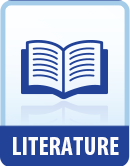|
This section contains 383 words (approx. 1 page at 400 words per page) |

|
Paradoxes and Oxymorons Summary & Study Guide Description
Paradoxes and Oxymorons Summary & Study Guide includes comprehensive information and analysis to help you understand the book. This study guide contains the following sections:
This detailed literature summary also contains Bibliography on Paradoxes and Oxymorons by John Ashbery.
"Paradoxes and Oxymorons" originally appeared in the Times Literary Supplement and was later published in John Ashbery's 1981 collection of poems Shadow Train, nominated for the American Book Award. A favorite both of the poet's and of editors', "Paradoxes and Oxymorons" has been widely anthologized. At one point Ashbery wanted the poem to be the title of the collection because he felt that it was the most accessible poem in the book. Written between March and mid-October 1979 in the poet's newly acquired Victorian-era house in upstate New York, Shadow Train contains fifty sixteen-line poems that some critics have likened to a sonnet sequence. Unlike sonnets, which consist of fourteen lines, Ashbery's poems have no set rhyme scheme, and Ashbery himself has said that he doesn't much like sonnets.
Typical of many of Ashbery's poems, and of much post-modern verse, it directs readers' attention to the words themselves, placing the language's materiality and the process of meaning making in the foreground. The poem, its speaker, and its readers all take part in this process. Paradoxes are statements that contain often inexplicable or contradictory elements that nonetheless may still be true in some way. For example, in the third line the speaker says of the poem, "You have it but you don't have it." Oxymorons are rhetorical figures in which contradictory terms are combined in a phrase, such as "jumbo shrimp," or such as "A deeper outside thing" at the beginning of the ninth line in Ashbery's poem.
Also typical of Ashbery's poetry is the high level of abstraction and self-questioning. His lines often suggest or echo other lines or ideas that readers "think" they know, only to shift suddenly to something altogether different. This is why many critics and general readers are often at a loss to describe what Ashbery's poems are "about." In many ways he can be read as a poet with no "real" subjects. Because Ashbery's poems rely heavily on associative thinking and connections between and among lines, images, and ideas are often tenuous at best, and critical interpretations of individual poems may yield little in the way of insight. Readers interested in grasping Ashbery's work would be better served by reading a complete collection of his poems, treating them as part of the longer poem of Ashbery's life's work.
Read more from the Study Guide
|
This section contains 383 words (approx. 1 page at 400 words per page) |

|



